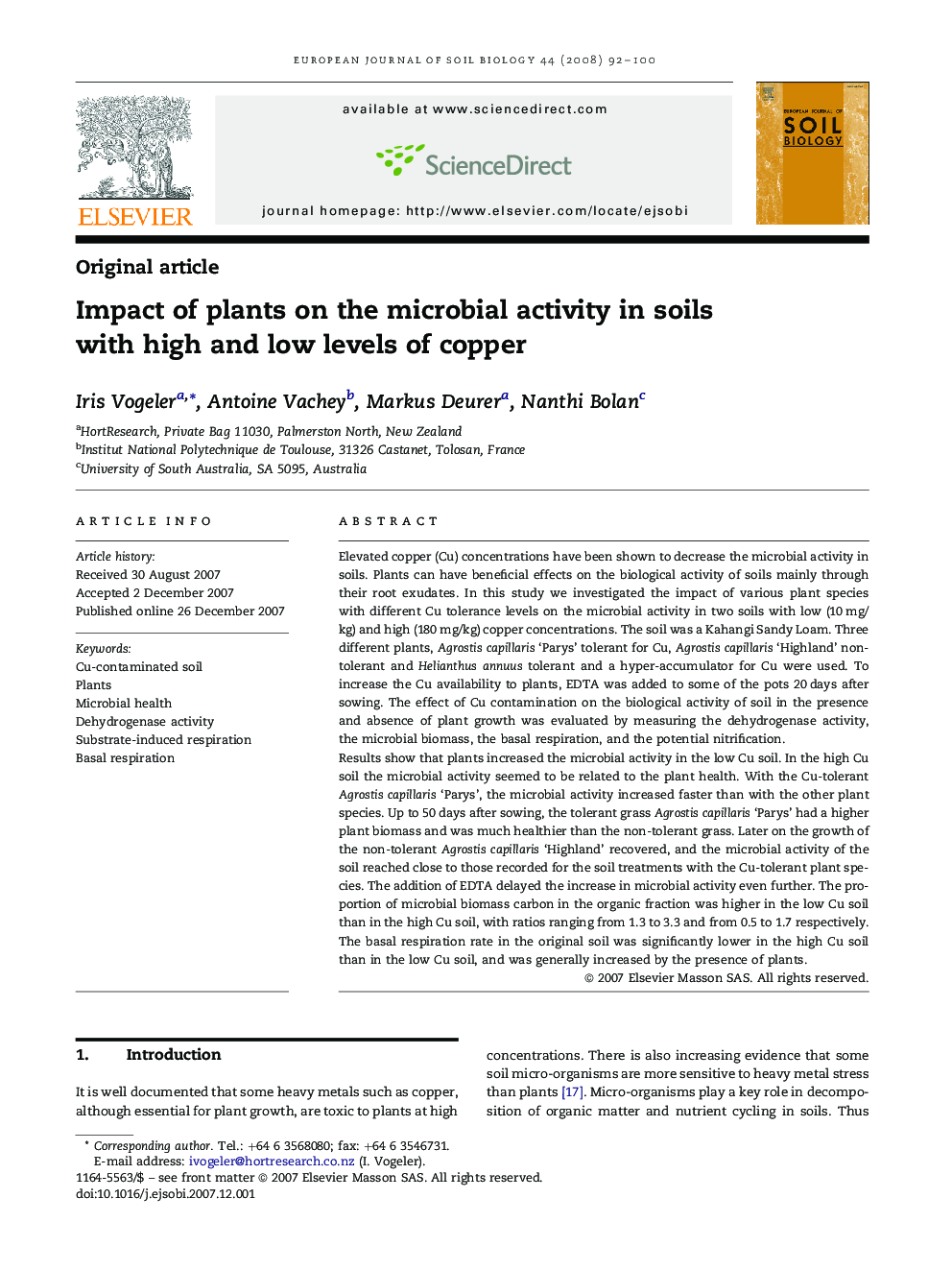| کد مقاله | کد نشریه | سال انتشار | مقاله انگلیسی | نسخه تمام متن |
|---|---|---|---|---|
| 4392358 | 1618165 | 2008 | 9 صفحه PDF | دانلود رایگان |

Elevated copper (Cu) concentrations have been shown to decrease the microbial activity in soils. Plants can have beneficial effects on the biological activity of soils mainly through their root exudates. In this study we investigated the impact of various plant species with different Cu tolerance levels on the microbial activity in two soils with low (10 mg/kg) and high (180 mg/kg) copper concentrations. The soil was a Kahangi Sandy Loam. Three different plants, Agrostis capillaris ‘Parys’ tolerant for Cu, Agrostis capillaris ‘Highland’ non-tolerant and Helianthus annuus tolerant and a hyper-accumulator for Cu were used. To increase the Cu availability to plants, EDTA was added to some of the pots 20 days after sowing. The effect of Cu contamination on the biological activity of soil in the presence and absence of plant growth was evaluated by measuring the dehydrogenase activity, the microbial biomass, the basal respiration, and the potential nitrification.Results show that plants increased the microbial activity in the low Cu soil. In the high Cu soil the microbial activity seemed to be related to the plant health. With the Cu-tolerant Agrostis capillaris ‘Parys’, the microbial activity increased faster than with the other plant species. Up to 50 days after sowing, the tolerant grass Agrostis capillaris ‘Parys’ had a higher plant biomass and was much healthier than the non-tolerant grass. Later on the growth of the non-tolerant Agrostis capillaris ‘Highland’ recovered, and the microbial activity of the soil reached close to those recorded for the soil treatments with the Cu-tolerant plant species. The addition of EDTA delayed the increase in microbial activity even further. The proportion of microbial biomass carbon in the organic fraction was higher in the low Cu soil than in the high Cu soil, with ratios ranging from 1.3 to 3.3 and from 0.5 to 1.7 respectively. The basal respiration rate in the original soil was significantly lower in the high Cu soil than in the low Cu soil, and was generally increased by the presence of plants.
Journal: European Journal of Soil Biology - Volume 44, Issue 1, January–February 2008, Pages 92–100